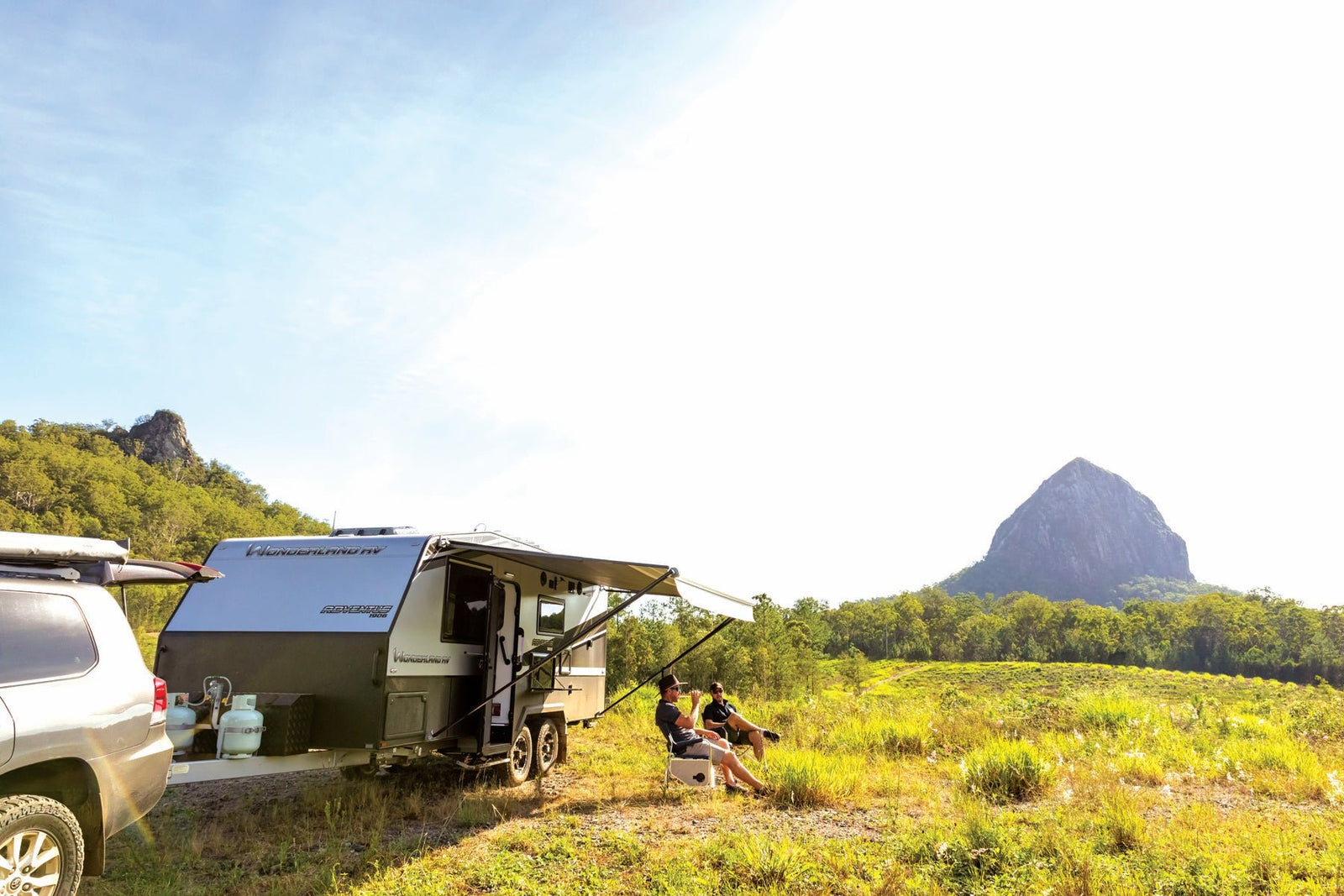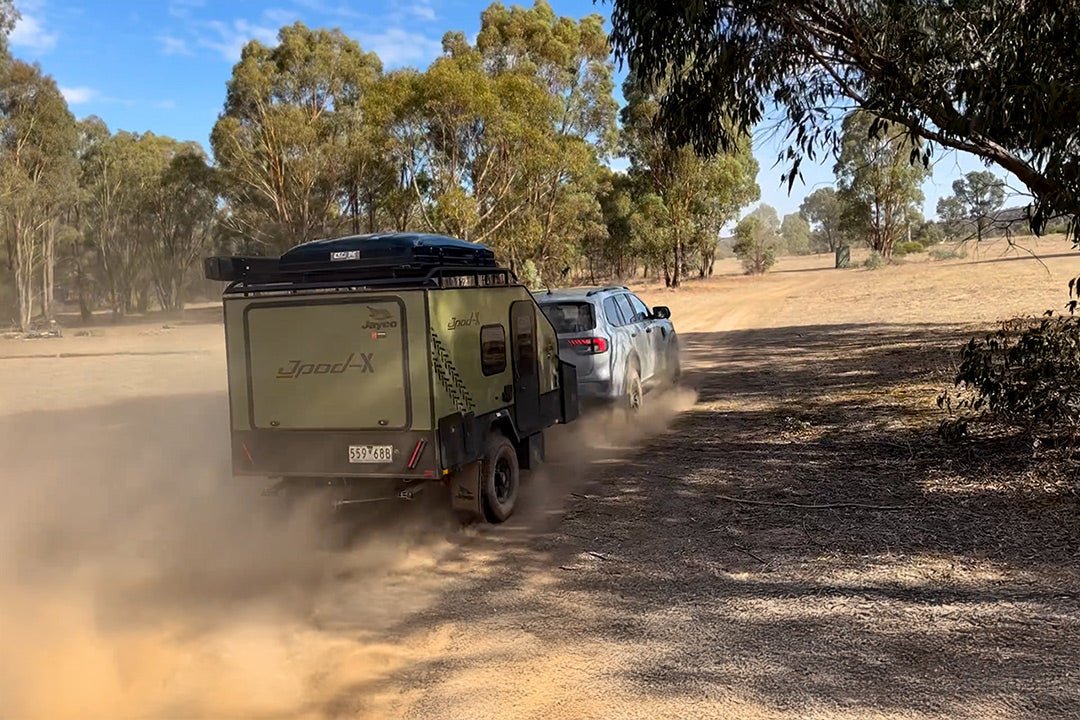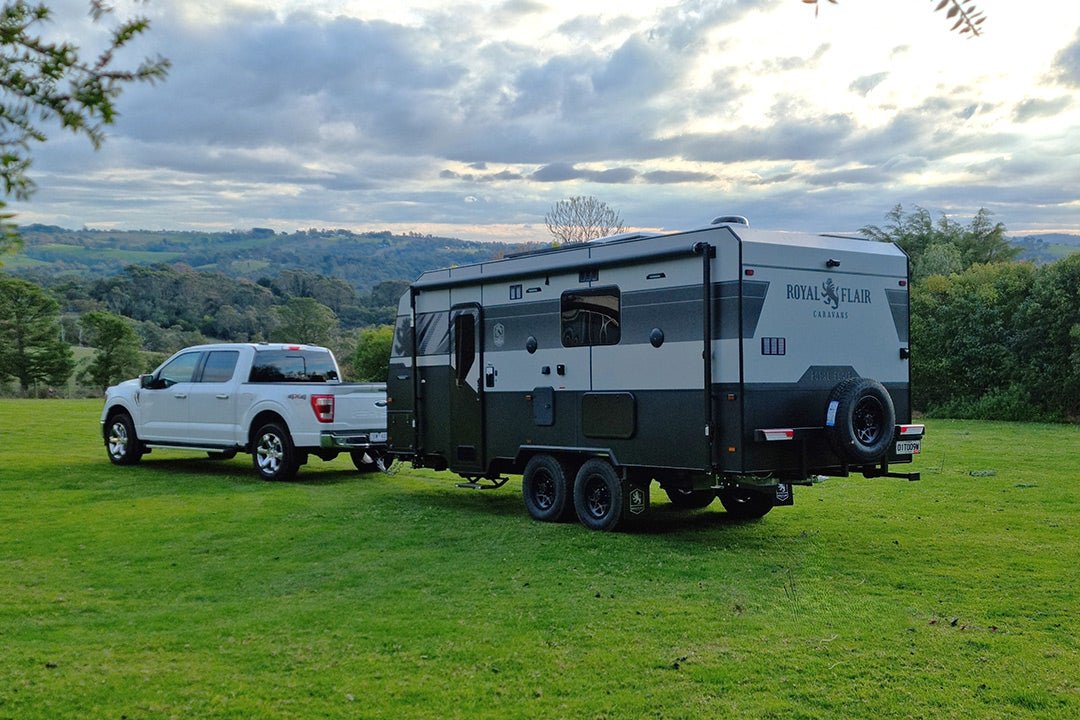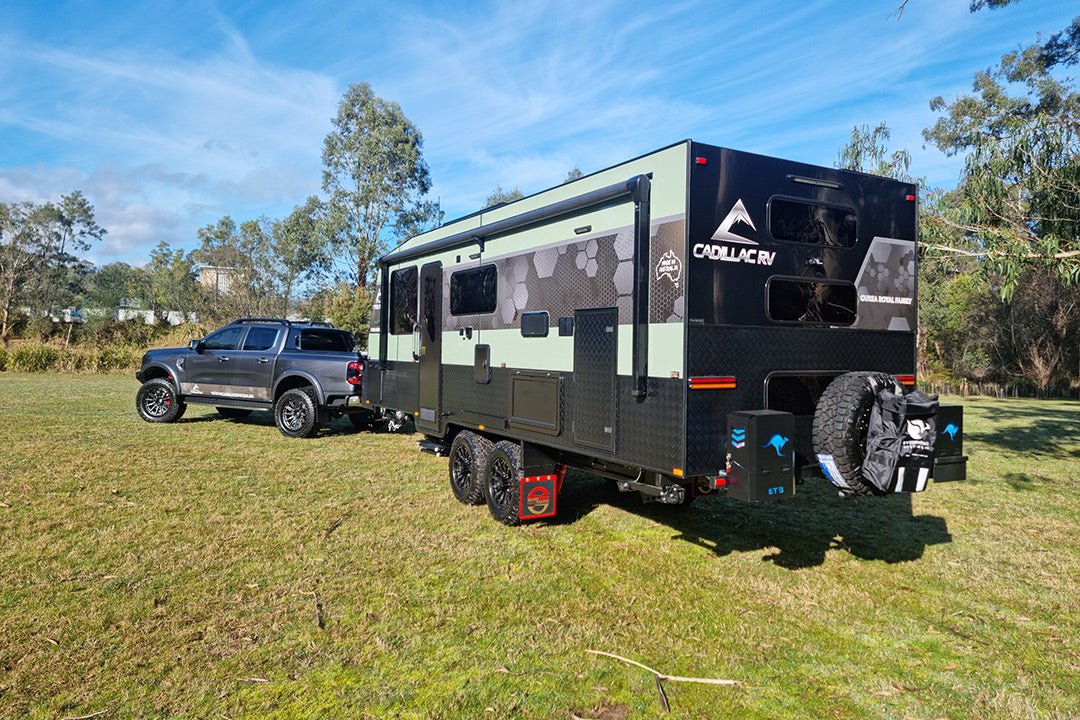The State of Play

In Australia, Recreational Vehicles (RVs) have been around for a lot longer than many people think. They don’t quite go back to the Model T Ford era but certainly early 1920s saw a few caravans on the road.
There are number of caravans still around today which have names that might be familiar from a few generations ago such as Viscount, Millard and Franklin but it’s only the names that have survived, the original manufacturers having long gone. There are a few exceptions to that though. Roma Caravans for instance, has been around since 1928 and has been in the hands of the Palmerini family since the mid 1950s. That’s some lineage
Mastercraft is a name known by few today but for about 30 years from the 1930s, it was a Sydney-based manufacturer of both caravans and motorhomes. Other names that came out of the 1950s and 1960s include Crestline and Carapark. No longer in operation, these vans were mostly built on a steel chassis with a Bondwood body. There are still a few of the distinctly-shaped caravans around today.
Motorhomes have a slightly more chequered history but one of the first few built in Australia is reckoned to be Gerhard (Pop) Kaelsers in 1929. Called “Home from Home”, the motorhome was built on a Dodge Tourer and the one that followed can be seen on display in Goolwa, South Australia.
A subset of the caravan industry is fifth wheelers or gooseneck trailers. Strangely, despite having better towing characteristics than a caravan, fifth wheelers have never very popular in Australia. However, there were and are a small number of manufacturers who fill that market niche.
BOOM TIMES
In the 1960s and early '70s, the RV industry was in its heyday. There were five major caravan manufacturers - Viscount, Millard, Franklin, Chesney and Coronet. At least two of them had their beginnings much earlier – Millard in the late 1940s and Viscount in the mid '50s.
Although Victoria is very much the centre of the caravan industry these days, in those times both Viscount and Millard had huge factories in the Sydney region. Many manufacturers could turn out 100 caravans per day and, in the case of Millard, at one point it was turning out 70 caravans per day.
By that time caravans did include items such as fridges, sinks and cooktops. Water pumps, if they existed, were either hand or foot operated. Microwave ovens were unheard of and wiring systems for the most part consisted of 240V mains wiring and 12V for the dual voltage lights. The vans' 12V power came from a 'hot wire' to the tow vehicle. Both Millard and Viscount used aluminium frames and just about everyone was using aluminium cladding. Steel, not necessarily galvanised, was used for the chassis and most suspension systems were leaf spring. There were a couple of manufacturers who stepped away from the standard and built fully moulded fibreglass van. Certainly rare enough to be distinctive. Some things from that period of time are still with us. Millard set up a more budget line of caravans under the York brand and that sold quite successfully. Several manufacturers still use that marketing model today.
ALTERNATIVES TO CARAVANS
In those times, as now, motorhomes were far less common. If anyone owned one, it was usually a Volkswagen Kombi! In the early 1960s a manufacturer called Freeway started to build motorhomes in Sydney. That later morphed into Winnebago (nothing to do with the US manufacturer of the same name) and is now known as Avida.
CHANGING TIMES
The good times in the RV industry came to an end in the late `970s and early '80s. Several Middle Eastern countries put the squeeze on fuel oil supplies and consequently the prices of petrol rose dramatically.
Up until that time, Holden Kingswoods, Ford Falcons and Valiant Regals with big six and V8 cylinder engines were very popular family vehicles and also doubled well as tow vehicles. When fuel prices went up, everyone started downsizing their vehicles and caravan towing dropped accordingly.
About that time, manufacturers such as Holden introduced rear coil spring suspension to vehicles like the Commodore which changed towing capabilities, too. One side effect was that it became much more difficult to fit towbars because of the lack of strength in the rear of the vehicle.
ROAD TO RECOVERY
The caravan and motorhome industry took a long while to recover only partially from that boom period in its history. The tradition, if you like, of family holidays through succeeding generations was much watered down and things such as cheap overseas holidays were making their presence felt and have continued to do so ever since.
Undoubtedly, what has helped the caravan industry since the early 1980s has been the rise of the Grey Nomads. Retiree couples, many of whom are reliving their earlier caravanning experiences, are spending their kids’ inheritances, buying a caravan or motorhome and getting out into the wild blue yonder.
Family caravanning is still popular but it’s undoubtedly the retirees who have sustained the industry. Apart from anything else, the fact that many caravan are just two-berth models is the clue.
THE RV INDUSTRY TODAY
Since the 1980s, caravans have changed greatly but some things such as build techniques remain much the same. Box section steel chassis are still in vogue, although usually galvanised and much more substantial than those of years ago.
It’s not all box section design, though. Caravans imported from Britain and Europe often have an AL-KO style chassis, which usually consists of the main and drawbar rails plus a few cross members. If it looks like someone is skimping on steel work at the expense of strength, they are not because part of the caravan’s overall strength is built into the body work. Some manufacturers use C section rails, instead of RHS which is a neat way to save weight. One or two manufacturers even use aluminium for the chassis.
Suspension systems have changed radically. Although there are still many caravans around with leaf spring suspension, independent suspension setups have become far more common. Coil springs with trailing arms and shocks absorbers are the most common but there are variations that use airbags and leaf springs. More common in Europe and North America, torsion rubber suspension is also used in caravans.
Both aluminium and timber framing is still used extensively, although in recent years, there are some variations on the timber framing concept which involves using ply sheeting. Although aluminium cladding is still extensively used, much greater use is being made of fibreglass and aluminium composite walls. In some cases, the traditional frame structure is dispensed with altogether and a composite wall structure is used.
It’s not only manufacturing techniques that have changed over the last couple of decades, the interior fitout of RVs has changed greatly. Cooktops, sinks and fridges are standard items of course, although fridges have grown in size. Microwave ovens, 12V water pumps, bathrooms with separate shower and toilet facilities, house batteries, solar panels, LED lighting, TVs and awnings are all mostly standard fittings. Even washing machines are becoming more common. All of the above is very nice of course, but it all adds weight.
What also adds weight is the current popularity of offroad caravans - just about every manufacturer makes them in some form. 'Offroad', 'semi offroad' and 'multi-terrain' are all terms that get used which are sometimes confusing to buyers. Because of a beefed-up suspension, chassis changes and maybe body structure that all means extra weight to be towing around.
Mostly because of geographical isolation, the Australian RV industry tends to be a bit insular from what is going on in the rest of the world. Although many of the components used in RVs come from China, Europe and North America most of the actual building of RVs is very home-grown. There are some obvious advantages to that of course but from the consumer's point of view there are a few disadvantages too.
RV imports come from a variety of countries. Several British manufacturers have agencies in Australia and there’s even one from Slovenia. Some years ago the camper trailer industry was turned on its head by imports from China and whilst that hasn’t yet happened in the caravan and motorhome sector, there are now a few caravans that are fully built in China. Caravans, motorhomes and fifth wheelers are imported in small quantities from North America but they are subject to quite a few compliance requirements and are very much subject to the US dollar exchange rate.
NEW ZEALAND NEIGHBOURS
Some people to their cost (usually Australian manufacturers) think that being a close neighbour, the New Zealand RV industry is very similar to ours. In fact it isn’t and in some ways it is quite different. In Australia, the caravan side of the industry is very dominant something like a 90 per cent / 10 per cent ratio whilst in NZ it’s more like 50/50.
There are two reasons for that. One is that the motorhome rental business in NZ is very strong and that tends to work its way through to the retail market. The other is that back 1979 the then Federal Government introduced a 20 per cent luxury tax on boats and caravans. The short version of that is not only did the government not get much in the way of taxes, it just about destroyed the caravan industry…
For a time after that the ratio of motorhomes to caravans was about 80/20.
NZ-built caravans, when they were being manufactured, although built in a similar way to Australian caravans did not look anything like them. The most characteristic feature was very large windows all round – that is still evident today in the current generation of locally-built caravans, although the windows are slightly smaller. Generally speaking, all RVs are lighter than their Australian counterparts.
Apart from motorhomes, the other area where NZ is different to Australia is that there is a considerable amount of imported RV product available. Australian, British, French, German, Italian, Spanish and US-built RVs are readily available in NZ. Although that has had some effect on local manufacture, it has given the consumer a wide variety of choice, something just about no other country has.
Two facts are of interest here. One is that NZ uses many of the same design standards that we do. The other is that the RV market is quite strong and moving along faster than Australia’s and has been for some years.
A EUROPEAN EXAMPLE
Just to save a bit of space here, I’ll put all the European countries including Britain into the one basket. There is a vast amount of RV technology in Europe and a considerable number of manufacturers, although many are part of either the German Hymer group or the French Trigano group.
Most manufacturers use a mixture of moulded fibreglass and fibreglass/aluminium for their composite panel body structures. All the appliance brands are the same as used in Australia - it’s just the model numbers that are different. RV prices are generally cheaper than Australia. In the case of motorhomes, many of the cab chassis look very familiar. Fiat Ducato, Iveco Daily, Renault Master and Mercedes-Benz Sprinter are all in use. As are Ford Transit and Volkswagen Crafter. Like the NZ product, European RVs are lighter than Australia’s.
A TRIP TO SOUTH AFRICA
South Africa isn’t the first nation you perhaps think of relating to RV industry, yet the country does have a number of manufacturers and importers. Both on-road and offroad (called gravel-roaders) are available.
A couple of brands might be familiar to Australian RVers, Jurgens and Swift. The latter are the imports but the Jurgens brand into Australia seems to have mastered the adoption of a European style to Australian road conditions. What is interesting is that caravan weights are generally lighter than those in Australia.
WELCOME TO THE US OF A
The RV industry in the USA is huge. Not only in production capacity but also in the size of the RVs it produces. The US industry took a big hit after the Global Financial Crisis in 2007, but has recovered quite well.
Although the US does produce RVs that are similarly sized to those in Australia, triple slide-out fifth wheelers, travel trailers (caravans) and motorhomes are all too common. Just like Australia, much of the industry is situated in one state – Indiana - where about 85 per cent of the national production rolls out the door. RV prices are much cheaper than Australia – something caused in part by the scale of production. Although US manufacturers have different techniques for RV construction, it looks a bit familiar to Australian RVs – steel RHS chassis, timber or aluminium or both frames and aluminium or fibreglass cladding. Suspension in caravans is usually leaf spring or rubber torsion.
Inside the RVs, the appliances might look familiar but they are mostly larger than those used in Australia. Weight and space saving are clearly not considerations amongst many US manufacturers but that's mostly because there are plenty of heavy duty tow vehicles around – think Chevrolet Silverados, Ford F350s and (Dodge) Rams. Motorhome base vehicles are varied. For B & C class motorhomes, the Ford E series is a very popular choice, although the new generation Ford Transit is moving in. There are some US versions of Mercedes-Benz Sprinter and Fiat Ducatos (called the Dodge Promaster in US-speak) but they often have larger US-fitted engines compared to the European versions.
FUTURE OF AUSTRALIAN RVs
Before looking at the future, it might be good to consider the present. Like how did we get to where we are now with almost unique Australian-built vans which, in some cases, are bordering on the overweight.
History on a number of fronts plays a big part in this conversation, of course. The collective DNA of the caravan manufacturers seems to remember the mid 1980s Viscount Aerolight which was an attempt by Viscount to produce a lightweight chassis and it failed rather badly. The result now seems to be a certain reluctance by many to even try to produce a fully engineered lightweight chassis. A rather unfortunate fact is that apart from North America, we build some of the heaviest caravans in the world.
Caravans built for 'Australian conditions' is certainly a phrase that gets bandied around by manufacturers and industry associations but what does it actually mean? Long distance, gravel roads and rough bush tracks probably come to mind. Australia is not alone in those areas though. Canada has long distances, as does the USA and to a lesser extent South Africa. Canada (well away from the US border) and South Africa have gravel roads and rough tracks.
These days there is an enormous amount of Australia that can be explored without leaving the blacktop and building a van for long distance travel isn’t the same as a purpose built offroader. One difference is the weight factor. I do wonder just how many caravan owners in Australia take their offroad caravans along rough bush tracks on a regular basis.
It’s not only manufacturers selling a bit of a dream, either. Customer expectations get a look-in here too. Sometimes marketing hype may give the wrong idea. A while ago I wondered why a camper trailer manufacturer fitted 150mm/6in RHS rails to the chassis of a fairly small trailer. The answer was nothing to do with engineering – it’s what the customers want. Having all the goodies in a contemporary van is great but it does add weight. Has 'caraglamping' been taken a bit too far?
As noted earlier, a fair chunk of the Australian caravan industry is Melbourne-centric. Whilst it’s good for suppliers, it’s not necessarily good for the manufacture of a more diverse product. That’s nicely demonstrated by the smaller number of caravan manufacturers in the southeast Queensland area – generally speaking their products are more easily identifiable in the general marketplace.
On the subject of imports, there’s a certain amount of paranoia amongst local manufacturers from product coming out of China and any time a European-built RV appears on the horizon the compliance flag gets raised like some sort of default tariff scheme. No doubt it’s essential for the appropriate ADRs and AS/NZ standards to be applied but does anyone really think that our design standards are superior to that of a country that produces Mercedes-Benz and BMW cars?
Where to for the future? A good question but apart from anything else, I reckon there might have to be a bit of rationalisation give the relatively larger number of smaller manufacturers, the current economic conditions and the proposed design rule changes happening next year.
On the construction front, for some manufacturers even the time honoured 'sticks' timber frame is changing to sheet style framing. There is definitely a shift towards composite wall structures and also reduced weight chassis designs are on the rise, which is good because, like many Australian citizens, Australian-built RVs definitely have to shed a bit of weight.
About 15 years ago I was at an industry conference and a well known industry person said at the time: “We should focus on reducing towing weights otherwise we’ll all be driving around in LandCruisers.” That was certainly a very prophetic comment which has come to pass but the problem is: what next? Towing options greater than 3500kg do become much more expensive.
RV manufacturers have certainly embraced the technology bit with batteries (deep cycle and lithium), solar panels, battery management systems and LED lighting. We can only expect that to continue.
Still on electrics, battery powered cars are becoming more common in cities and large towns but will we be seeing battery powered tow vehicles and motorhomes in the near future? Although I have actually driven a battery powered motorhome, I suspect not. Mostly because of that aforementioned Australian problem – long distances without any big scale infrastructure. Something that even causes problems with petrol and diesel-powered vehicles now.
I don’t have a crystal ball on what might happen in the Australian RV industry in the future. Some things will evolve from either development or customer demand but there may have to be some changes too from forces outside Australia’s control. I reckon the next few years look to be very interesting.







